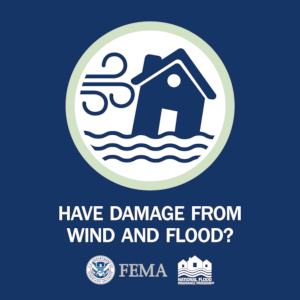You may want to know how adding an addition or remodeling impacts insurance coverage.
Are you planning a new addition to your home, or a remodeling project, or possibly an ADU? How can you be sure your homeowner’s insurance is up to the task? What does your insurance agent need to know about your project? The following may help.
- Will you be adding to the square footage of your current living space?
- What will the project entail? For instance, if it is a bathroom remodel, will it be a modest upgrade, or will it be all high-end fixtures and features?
- If the project is extensive, should you call your insurance agent before you start?
Insurance broker Jim Sciaroni of California Meridian Insurance Services, provides this advice: “When someone plans on doing a remodeling job, it’s good to call their agent before they do it. If they’re leaving their house because they are doing a major remodel and moving out for, say, six months, then they definitely want to call their agent well in advance. Some carriers don’t want to continue ensuring under those circumstances. The homeowner may need a construction policy.”
If you’ll be doing structural changes to your home during a remodeling project, Sciaroni recommends checking with your agent just to be sure you have the right amount of coverage.
Wildfires ravaging entire towns and neighborhoods have left many residents in Marin, Sonoma or Napa worried about whether they have sufficient coverage for a total rebuild. New ordinances concerning fire- or weather-resistant structural upgrades and even landscaping could impact the cost of rebuilding in the event of a fire. Homeowners may be faced with thinking about instituting additional means of egress and evacuation. If you live in an older home, the code changes could affect an extensive list of items that could be impacted. New building codes can also require new HVAC systems, not to mention upgraded plumbing, electrical wiring and even insulation.
What is building ordinance or law coverage for homeowners?
Building ordinance or law insurance coverage is an additional level of property insurance. It is meant to cover the costs associated with rebuilding or repairing a portion of your home damaged by a covered loss that now involves additional new laws, codes or regulations that your rebuild must meet.
Sciaroni, explained it this way: “What that means is that if the codes and rules are different for rebuilding your house now, versus when the house was built, or when you bought it, this type of insurance can cover those new code upgrades. The best example would be if you have single-pane windows in your house and it is damaged by a covered event, and to rebuild, new codes require you use double pane. Maybe it’s an extra $40,000 to do double-pane windows than it would have been for single pane. In reviewing your homeowner’s policy, you want to make sure you have enough building law ordinance coverage to cover the increased cost of building or rebuilding, versus simply having coverage for the way the house was when damaged.”
An additional coverage in standard homeowners insurance is typically included, but those policies may come with a minimal ordinance or law coverage limit of about 10% of your home’s coverage amount.
Sciaroni added, “So, if you have $800,000 of dwelling coverage and the building law ordinances coverage you add as an endorsement is say, 20% or 50%, that allows you to use that percentage of the total coverage amount for anything that has to do with code changes.”
What are the pros and cons of earthquake and flood insurance?
Earthquake and flood insurance are separate policies that don’t come with your regular homeowner policy. Some carriers will add those coverages to the same policy, when requested. Others may not. According to Sciaroni, only about 10% of his clients request earthquake insurance. He doesn’t feel this makes them smarter than the other 90%. The deductibles are very high at 5 to 25%. So, if your dwelling coverage is one million dollars, that would mean a deductible of $150,000. He suggests that you can look at it from the other side of the coin. If you have a $1,000,000 home and it’s completely lost due to an earthquake that is not covered by a conventional homeowner’s policy, could you afford to rebuild?
Flood insurance is meant to cover your home if you’re in a flood area, although your home does not need to be in an identified floodplain to apply for flood coverage. The flooding that takes place in Marin County after big storms impacts a wide range of neighborhoods, from Corte Madera, Larkspur, Mill Valley, San Anselmo and San Rafael, and several in between. With climate change and rising sea levels, areas that were not a flood risk before might become one.
Shopping around for the best overage, whether it is through California Earthquake Authority, the National Flood Insurance Program through FEMA or private insurers, the coverage is available.
Before launching your remodeling project, check with your insurance agent to see whether you have the right coverage for the job.
Your flood zone is not the only factor that determines your flood risk. Many other factors, such as recent construction, fires, a breached dam, or oversaturated land, can lead to flooding. Wherever it rains, it can flood. All 50 states have experienced recent flood events, and more than 40% of NFIP claims have come from outside high-risk flood zones.
National Flood Insurance Program
If you’d like to explore your ideas for a remodeling project, contact us today.



